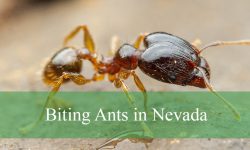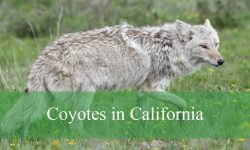Doves bring a sense of peace and beauty to Colorado’s skies, filling open fields, forests, and neighborhoods with their gentle presence. Their cooing calls and graceful flight make them a favorite among both casual observers and dedicated birdwatchers.
Across the state, eight different species of doves and pigeons can be found, ranging from the common Mourning Dove to the more unusual Ruddy Ground Dove. Each species offers its own charm, from size and color patterns to unique habitats and behaviors.
Exploring Colorado’s diverse landscapes often leads to memorable encounters with these elegant birds. By learning to identify them, bird enthusiasts can gain a deeper appreciation of the state’s rich birdlife.
Different Types of Doves Found in Colorado
Rock Pigeon (Columba livia)
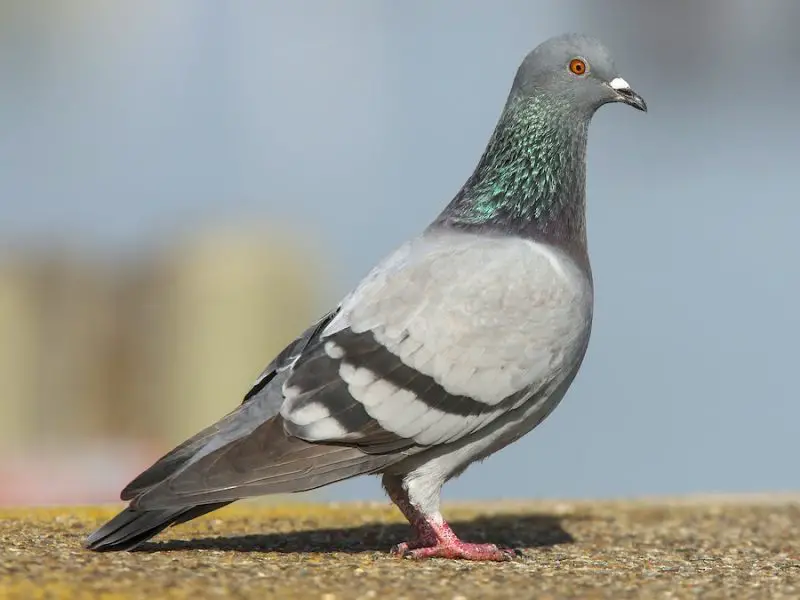
Rock Pigeons are one of the most familiar birds in urban and rural areas across Colorado. They are medium to large doves, often recognized by their grayish-blue plumage, two dark wing bars, and iridescent green and purple hues on the neck. Their adaptability has made them permanent residents in cities, towns, and agricultural regions throughout the state.
In terms of size, Rock Pigeons measure about 11–13 inches (28–33 cm) in length, with a wingspan ranging from 24–28 inches (62–72 cm). They typically weigh around 9–13 ounces (238–380 g), making them among the largest doves found in Colorado. Their broad wings and fast, direct flight help them thrive in both open and urban landscapes.
These pigeons are not native to North America but were introduced from Europe centuries ago. Today, they are a common sight around buildings, bridges, and grain storage facilities where food is plentiful. They are highly social, often gathering in large flocks for roosting and feeding.
Rock Pigeons feed primarily on grains, seeds, and scraps of human food, which explains their abundance in populated areas. Farmers sometimes consider them pests due to crop damage, yet their presence is also tied to the cultural history of domesticated pigeons.
In Colorado, Rock Pigeons can be observed year-round, making them one of the most reliable dove species to encounter. Their ability to live closely alongside humans has secured their place as one of the state’s most recognized birds.
Band-tailed Pigeon (Patagioenas fasciata)
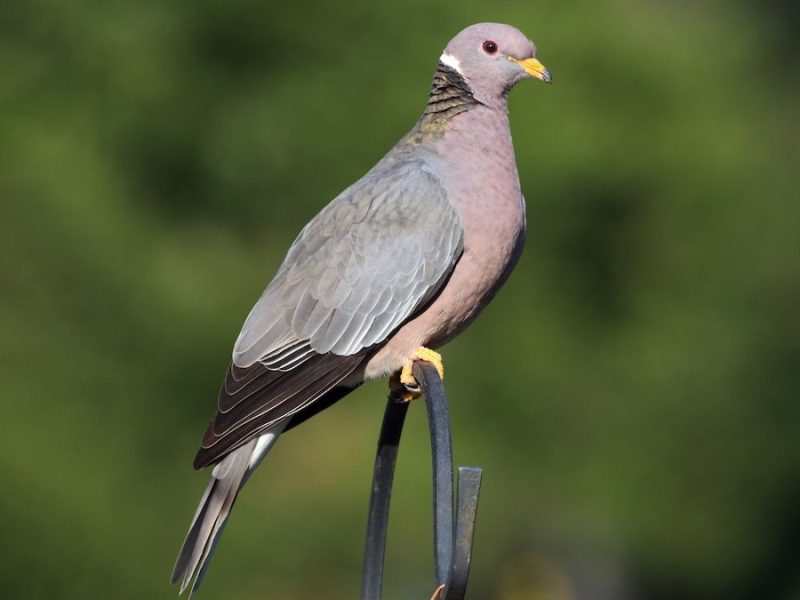
The Band-tailed Pigeon is the largest native pigeon in Colorado and is closely related to the extinct Passenger Pigeon. This species is elegant, with a soft gray body, a purplish wash on the breast, and a distinctive white crescent on the back of its neck. The broad gray tail shows a noticeable pale band, which gives the bird its name.
Adults typically measure 14–16 inches (36–41 cm) in length, with a wingspan of about 26–28 inches (66–71 cm). They weigh between 9–12 ounces (255–340 g), making them larger and heavier than Mourning Doves but slimmer compared to Rock Pigeons. Their long wings and strong flight allow them to migrate efficiently across mountainous terrain.
In Colorado, Band-tailed Pigeons are mainly found in forested mountain regions, especially in areas dominated by ponderosa pine, oak, or mixed conifer forests. They are more elusive than other doves and are usually seen in small flocks rather than large urban gatherings.
Their diet consists mostly of acorns, pine nuts, berries, and seeds. In late summer and fall, they follow food sources, often moving into lower elevations when natural food becomes scarce. They are known for swallowing grit and mineral-rich soil, which aids in digestion.
While not as widespread as Rock Pigeons or Mourning Doves, the Band-tailed Pigeon remains a unique part of Colorado’s avian diversity. Observers often need to venture into the foothills or mountain forests to encounter this striking bird.
Eurasian Collared-Dove (Streptopelia decaocto)
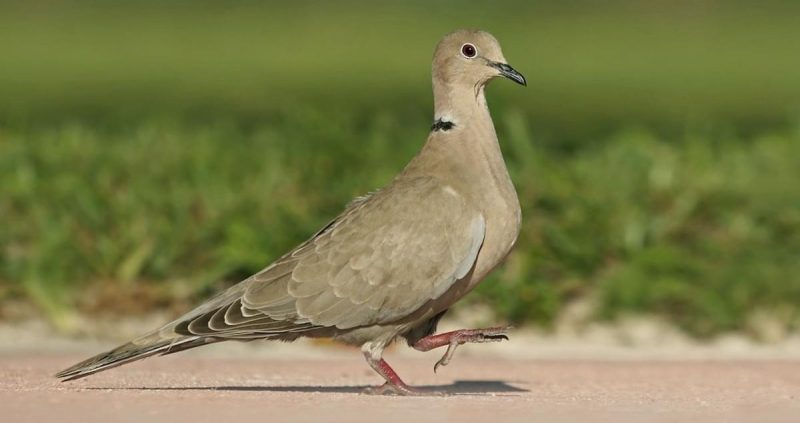
The Eurasian Collared-Dove is a relatively recent arrival to Colorado, having spread across North America only in the last few decades. They are pale gray with a slender build, black bill, and a distinct narrow black crescent, or “collar,” across the nape of the neck. This identifying feature separates them from other dove species in the region.
These doves measure about 12–14 inches (30–35 cm) long, with a wingspan of 18–22 inches (45–55 cm). Their weight typically ranges from 4–8 ounces (120–240 g), placing them between Mourning Doves and Rock Pigeons in size. Their broad, squared tail with white tips is noticeable in flight.
Eurasian Collared-Doves are most often found around human settlements, including towns, farms, and suburban neighborhoods. They thrive where grain and bird feeders are available, often gathering in groups on power lines or rooftops.
Their diet is dominated by seeds and grains, but they will also consume fruits and the occasional insect. They are bold birds, often perching conspicuously and producing a repetitive three-part cooing song that can be heard throughout the year.
Since their arrival, Eurasian Collared-Doves have rapidly expanded across Colorado, making them one of the more common doves encountered today. Their adaptability ensures they will continue to spread and establish themselves further in the state.
Inca Dove (Columbina inca)
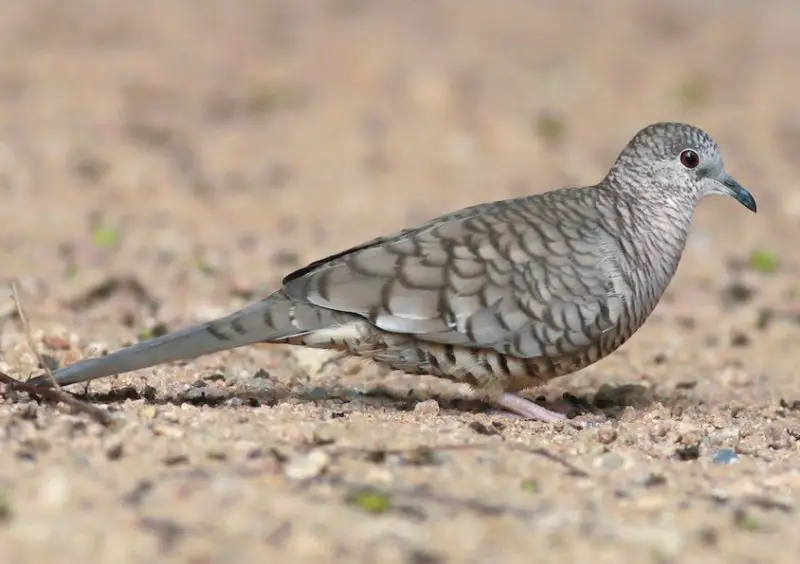
The Inca Dove is a much smaller dove compared to the others found in Colorado and is known for its delicate, scaly feather pattern. Each feather appears outlined in dark edges, giving the bird a scaly appearance across its pale gray-brown body. Its long, slender tail with white outer feathers makes it easy to distinguish.
In terms of size, the Inca Dove measures only 8–9 inches (20–23 cm) in length, with a wingspan of about 11–12 inches (28–30 cm). They typically weigh 1–2 ounces (30–58 g), making them one of the lightest dove species in the region. Despite their small size, they are agile fliers and resilient birds.
In Colorado, Inca Doves are not as common as Mourning Doves or Eurasian Collared-Doves. They are more frequently reported in the southern parts of the state, often near towns, parks, and backyards with open spaces. Their presence is sometimes tied to warmer microclimates and human settlements.
Their diet is mainly composed of seeds, which they forage for on the ground, often near feeding stations or agricultural areas. They are known for sunning behavior, spreading their wings on the ground during cool mornings.
Though less widespread than other doves, the Inca Dove adds variety to Colorado’s birdlife. Birdwatchers are delighted when they spot this smaller, uniquely patterned dove among the larger and more common species.
Common Ground Dove (Columbina passerina)
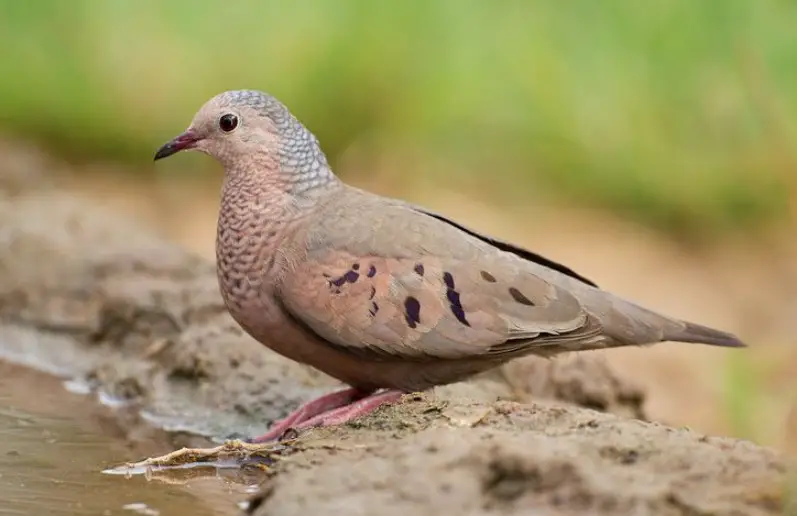
The Common Ground Dove is the smallest dove species found in Colorado, though it is considered rare in the state. Its plumage is generally grayish-brown with subtle scaling on the neck and breast. The wings reveal a chestnut or rufous patch when in flight, making them quite distinctive compared to other doves.
This dove is very small, measuring only 6.5–7.5 inches (17–19 cm) in length, with a wingspan of 10–11 inches (25–28 cm). Its weight averages 1–1.5 ounces (28–45 g), making it smaller than the Inca Dove. Despite its size, the Common Ground Dove is sturdy and quick in flight, staying low to the ground.
In Colorado, sightings are uncommon, usually occurring in the southeastern part of the state. They prefer open habitats such as scrublands, agricultural edges, and weedy fields, often blending into their surroundings due to their cryptic plumage.
These doves are ground foragers, feeding on small seeds and occasionally insects. They are often seen alone or in pairs rather than in large flocks. Their quiet cooing call, a soft and repetitive “woo,” helps birders locate them despite their elusive behavior.
Though not abundant, the Common Ground Dove adds to the diversity of Colorado’s dove species. Spotting one is a special experience for birders since they are much more common in the southern United States and Mexico.
Ruddy Ground Dove (Columbina talpacoti)
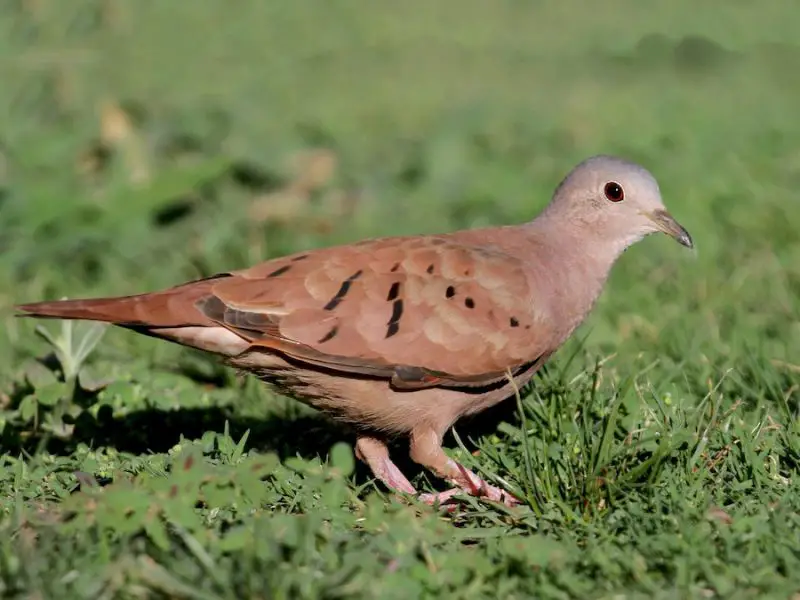
The Ruddy Ground Dove is another rare visitor to Colorado, mainly appearing as an occasional vagrant from farther south. True to its name, the male often has rich rufous or chestnut-colored plumage, while the female is more subdued in gray-brown tones. Both sexes show contrasting dark wingtips in flight.
This species is small, measuring 7–9 inches (18–23 cm) long, with a wingspan of 11–12 inches (28–31 cm). Their weight ranges between 1.5–2 ounces (40–60 g), slightly larger than the Common Ground Dove but still smaller than most other doves in the region.
In Colorado, Ruddy Ground Doves are extremely rare, usually appearing after being displaced by weather or during unusual migration events. Most sightings occur in the southeastern counties, close to agricultural fields and open habitats where seeds are abundant.
Their diet consists mainly of grass seeds, grains, and small weeds. They are ground feeders and prefer open, dusty areas where they can forage quietly. Their habits resemble those of the Common Ground Dove, though they are slightly bolder when disturbed.
For birders in Colorado, spotting a Ruddy Ground Dove is an exceptional event. Their rarity and striking coloration make them a highlight of any birdwatching experience in the state.
White-winged Dove (Zenaida asiatica)
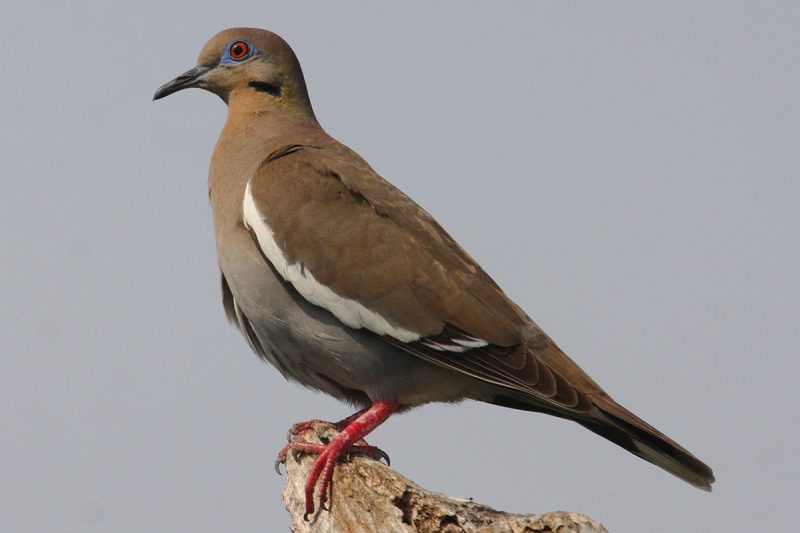
The White-winged Dove is a striking species known for the broad white patches on its wings, easily visible when in flight. Its body is a soft grayish-brown with a pale gray head, and a distinctive blue eye-ring. When perched, the white streak along the folded wing is a key identification feature.
These doves are medium-sized, measuring 11–12 inches (28–30 cm) in length, with a wingspan of 18–22 inches (45–55 cm). They weigh about 5–7 ounces (150–200 g), placing them between Eurasian Collared-Doves and Mourning Doves in size. Their powerful wings make them strong and direct fliers.
In Colorado, White-winged Doves are seen more frequently during the summer months, especially in the southern and southeastern regions. They are often associated with riparian habitats, towns, and areas with abundant food resources, such as backyard feeders and farmlands.
Their diet includes seeds, grains, fruits, and occasionally nectar from flowers like agave and saguaro in their southern range. In Colorado, they adapt easily to agricultural crops and residential areas. They are known for their loud, owl-like “who-cooks-for-you” call.
White-winged Doves have steadily expanded their range northward, and sightings in Colorado are becoming increasingly common. Birdwatchers often spot them perched in suburban neighborhoods, making them a growing part of the state’s avifauna.
Mourning Dove (Zenaida macroura)
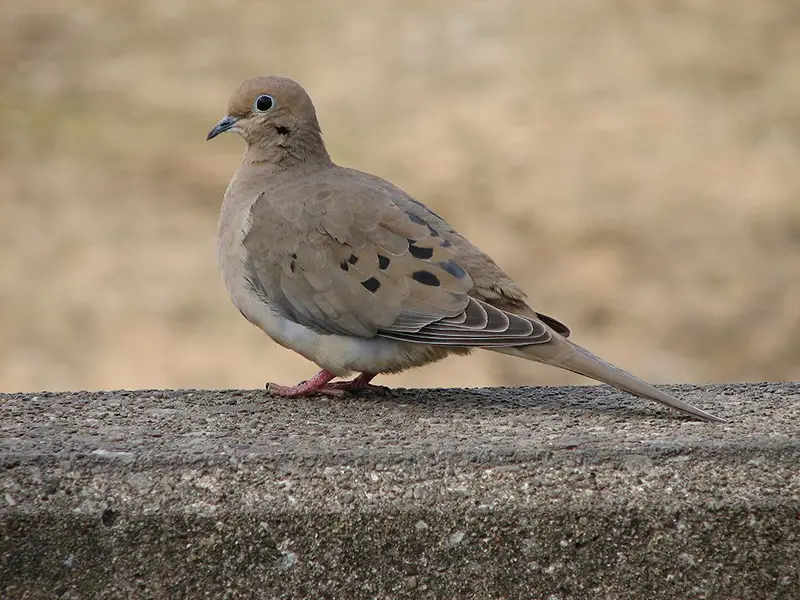
The Mourning Dove is one of the most widespread and familiar dove species in North America, including Colorado. It is elegant and slender, with a light brown to buffy-gray body, black spots on the wings, and a long pointed tail edged with white. Its soft, mournful cooing gives the species its name.
These doves measure 9–13 inches (23–33 cm) in length, with a wingspan of 17–18 inches (43–46 cm). Their weight typically falls between 4–6 ounces (112–170 g). They are smaller and slimmer than Rock Pigeons but larger than ground doves, with graceful flight characterized by rapid wingbeats.
In Colorado, Mourning Doves are abundant and widespread, found in open habitats, farmlands, grasslands, and suburban backyards. They are especially common in summer, as they migrate south for the winter months, although some may remain in milder areas year-round.
Their diet is composed almost entirely of seeds, with a strong preference for grains such as corn, millet, and sunflower. They forage on the ground in open spaces, often gathering in flocks outside the breeding season.
The Mourning Dove is also an important game bird in Colorado, with regulated hunting seasons. Despite heavy hunting pressure, their population remains stable due to their prolific breeding habits. They are a familiar and cherished presence across the state.
Best Time and Places to See Doves in Colorado
Doves can be observed across Colorado throughout the year, though the best seasons and locations vary depending on the species. Mourning Doves are most abundant in spring and summer, when they migrate into the state to breed. They are easy to spot in open fields, agricultural lands, and even suburban neighborhoods during these months.
Eurasian Collared-Doves and Rock Pigeons are present year-round and thrive in towns, cities, and farmlands. Their adaptability makes them some of the most reliable doves to see in Colorado at any time of year. Bird feeders, silos, and urban parks are excellent places to find them.
For rarer species such as the Band-tailed Pigeon, White-winged Dove, or Inca Dove, the best opportunities come in late spring and summer, particularly in the southern and mountainous regions of Colorado. Southeastern counties are hotspots for unusual sightings, including Common Ground Doves and Ruddy Ground Doves, especially during migration periods.
FAQs about Doves in Colorado
What is the most common dove in Colorado?
The Mourning Dove is the most common dove in Colorado, especially during the breeding season. They are abundant across the state in open fields, grasslands, and suburban areas.
Are Eurasian Collared-Doves invasive in Colorado?
Yes, Eurasian Collared-Doves are considered invasive. They spread rapidly across the United States in recent decades and are now common in Colorado’s towns and rural areas.
Where can I see Band-tailed Pigeons in Colorado?
Band-tailed Pigeons are typically found in forested mountain regions, especially in ponderosa pine and mixed conifer forests. Birders often encounter them in the foothills and higher elevations.
Do all dove species stay year-round in Colorado?
No, not all species remain year-round. Rock Pigeons and Eurasian Collared-Doves are permanent residents, while Mourning Doves and White-winged Doves are more seasonal, with populations peaking in warmer months.
Can I attract doves to my backyard in Colorado?
Yes, you can attract doves by offering seeds such as millet, cracked corn, and sunflower seeds on ground feeders. Providing water sources and open space for foraging will also encourage doves to visit.



